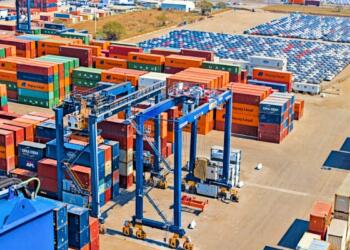
The Mexican Institute for Competitiveness (IMCO) published the 2024 State Competitiveness Index (ICE), a detailed analysis that measures the strengths and weaknesses of Mexico’s 32 states.
Four years after the pandemic, the 32 states show improvements in economic and infrastructure indicators. GDP per capita and GDP growth have registered significant increases; however, in other areas, there have been declines, especially in health, with an increase in morbidity from respiratory diseases and infant mortality across the country.
This report reveals that Mexico City has been crowned the most competitive state, thanks to its outstanding infrastructure and high level of education. Baja California Sur and Coahuila also stand out, showing strong performance in various economic and social indicators.

At the other end, Oaxaca is positioned as the least competitive state, as it faces serious challenges, especially in terms of foreign investment and economic complexity.

The ICE 2024 uses 50 indicators grouped into six sub-indices to evaluate the competitiveness of each state. Thus, we have:
Innovation and Economy: Chihuahua stands out for its high proportion of exports and economic complexity, while Oaxaca ranks last.
Infrastructure: Mexico City is the best connected, with an outstanding rate of point-of-sale terminals and mobile banking usage. Chiapas, on the other hand, shows poor results in access to mobile telephony and internet.
Labor Market: Mexico City has one of the highest average incomes for full-time workers and the highest level of education. Chiapas ranks last in average income and female labor participation.
Society and Environment: Mexico City leads in life expectancy and availability of hospital beds, while Hidalgo ranks last in access to health services.
Law: Coahuila stands out for its low crime rates and high perception of security, unlike Zacatecas, which has the lowest results in these aspects.
Political System and Governments: Yucatán is distinguished by its regulatory improvement and low perception of corruption, while Baja California has the lowest results in citizen participation and financial transparency.

Regarding the states preparing for elections, such as Mexico City, Chiapas, Guanajuato, Jalisco, Morelos, Puebla, Tabasco, Veracruz, and Yucatán, the report highlights that they face specific challenges in security, the labor market, and other areas.

As a result, the IMCO proposes a series of strategies to boost competitiveness at the state level, including the creation of state agencies to promote nearshoring. The development of strategies to improve access to telecommunication and internet services, the fostering of relationships between industries and educational institutions, the promotion of digital means for complaints and judicial processes, improving access to health services, and focusing public debt on local productive projects.
The IMCO 2024 State Competitiveness Index offers a detailed view of the strengths and weaknesses of Mexico’s states. As the country recovers from the pandemic, the report highlights the need for local public policies that address the specific challenges of each region, promoting equitable and sustainable growth throughout the country.
Comment and follow us on X: @GrupoT21













